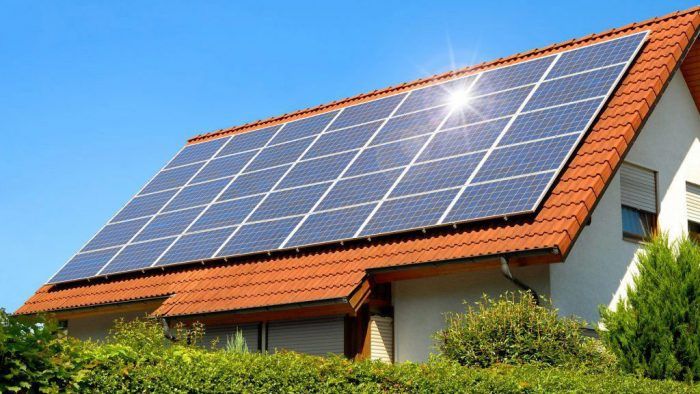How Do Solar Panels Work?
Builder and developer Fernando Pagés Ruiz explains the science behind sun-powered electricity generation.

For those not steeped in the field of chemistry, what follows is a quick-and-dirty rundown of how solar panels turn sunlight into electricity.
“Think of a solar cell as an LED in reverse,” explained Steffen Eikenberry, a researcher at the Arizona State University School of Mathematical and Statistical Sciences, during an hour-long phone interview. With the patience of a teacher explaining things to a C student, Dr. Eikenberry helped me gain a more complete understanding of how solar cells convert sun rays into energy.
The diode in an LED light is analogous to the two layers of silicon crystals in the solar cell. Except in a solar cell, the two layers of the diode are silicon, one on top and the other underneath. To generate an electrical current, these layers of silicon are treated through a chemical process called “doping” that causes an electron imbalance. In trying to achieve balance, the resulting electron dance becomes what we call an electrical current.
The top layer of silicon (exposed to the sun) is doped with phosphorus and the bottom layer with boron. Phosphorous has an extra electron, while boron is missing one. Electrons like to achieve stability in even pairs. Stable elements, such as argon, have even pairs. Unstable elements do not, but they seek to establish balance by sharing electrons with complementary elements. In a silicon wafer, electrons achieve equilibrium by pairing up in a matrix of shared electrons—or what we might call a crystal lattice (think snowflakes). But a photon, or a particle of light, precisely aimed and with just the right amount of energy, can knock a single silicon electron right out of its resting place.
When sunlight strikes the top layer of the silicon cell, particles of light, or photons, dislodge electrons from the crystal lattice. Were it not for the phosphorous doping, these free electrons would simply fly about and find their way back into their original position. Eikenberry explained that because of the electron imbalance created by the extra electrons in phosphorus and the missing electrons in boron, many of the electrons knocked out of the top layer travel to the bottom, seeking a resting place to settle into–a place known as an electron hole.
This movement of electrons between the top layer and the bottom layer (and back again) establishes a current, or flow of electrons, which we call electricity. When the top and bottom layers are connected through conductive plates and wires, the flow becomes a circuit and provides useful energy for lighting homes and charging batteries.
More precisely, photovoltaic cells are made of two layers of semiconductor material such as silicon—a material with some conductivity but not as much as metal. The semiconductor is chemically treated or doped to create a p-n (positive-negative) junction that acts as a diode. A diode is a device that allows the flow of current in only one direction—from positive to negative. The imbalance between the doped layers of silicon will enable electrons to pass only from positive to negative. As electrons from the p (positive, boron-doped side) move to the n (negative, phosphorus-doped side), they create a current. Eventually, circling back around through wiring, this electron dance is what we call a circuit. And voilà, we have the photoelectric effect.
It took no less than Einstein to figure out how this works, so don’t feel too bad if you, like me, are still scratching your head.
________________________________________________________________________
Originally published on GreenBuildingAdvisor.com.
Fernando Pagés Ruiz is a builder and an ICC-certified residential building inspector active in code development.





